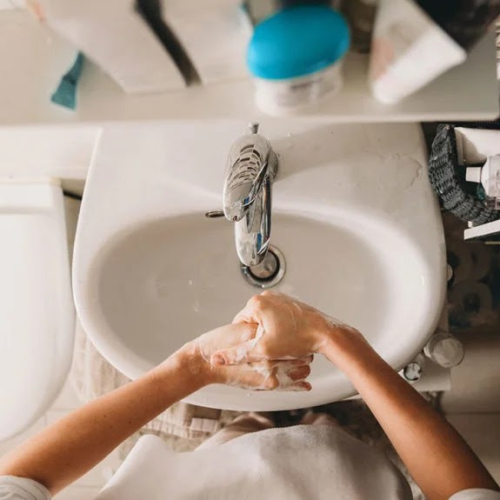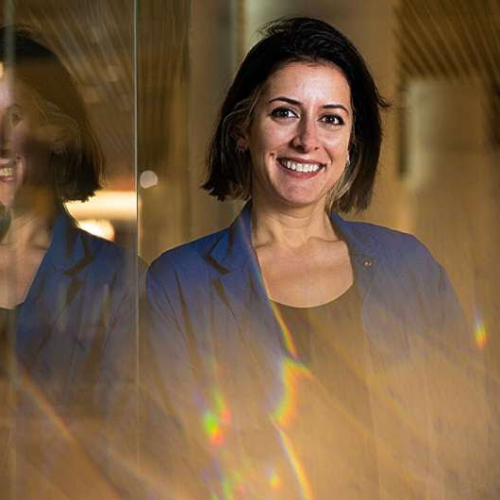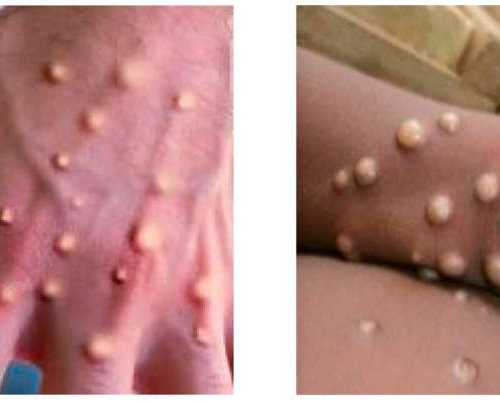Scientists have been making nanoparticles out of DNA strands for two decades, manipulating the bonds that maintain DNA’s double-helical shape to sculpt self-assembling structures that could someday have jaw-dropping medical applications.Four DNA nanostructures, two butted up against each other, highlighted in this electron microscope image. The structures are a little longer than 50 nanometers. A...
Year: <span>2024</span>
Spider Venom Heart Drug a Step Closer
A spider venom molecule being investigated by a University of Queensland team has met critical benchmarks towards becoming a treatment for heart attack and stroke.Associate Professor Nathan Palpant and Professor Glenn King examine heart cells in an IMB laboratory. Associate Professor Nathan Palpant and Professor Glenn King examine heart cells in an IMB laboratory. Image...
TEAM UNCOVERS A KEY ACTOR IN PANCREATIC CANCER’S SPREAD
POSTED BY ANDY FELL-UC DAVIS Researchers have identified a protein linked to metastasis in pancreatic cancer. Pancreatic cancer is the No. 3 cause of cancer-related deaths in the United States, and only 12% of patients survive five years after being diagnosed. Severe pancreatic cancer is associated with metastasis, and it is this spread of secondary tumors...
Causes and treatments for watery diarrhea (liquid poop)
Watery diarrhea can result from infections, medications, or chronic conditions. Treatments may include drinking plenty of water, avoiding foods that make it worse, and taking medications to treat diarrhea or an underlying condition. Most cases of diarrhea in adults are not serious and resolve on their own in a few days. Home care can help...
Researchers identify new mechanism that could improve the efficiency of diabetes treatments
by University of Barcelona Proposed mechanistic model for the hepatic effects of Gdf15 deficiency on fibrosis, gluconeogenesis and fatty liver via the TGF-β1-SMAD3 pathway. Credit: Metabolism (2024). DOI: 10.1016/j.metabol.2023.155772A study led by the University of Barcelona and the Biomedical Research Networking Center in Diabetes and Associated Metabolic Disorders (CIBERDEM) reveals how a new mechanism could improve...
What are the best products to prevent, relieve chapped lips?
by Erin Kayata, Northeastern University Northeastern associate professor of chemistry and chemical biology Leila Deravi says less is more when it comes to picking a product to prevent chapped lips. Credit: Alyssa Stone/Northeastern UniversityWhen the cold temperatures hit your lips and dry them out this winter, you might turn to some sort of lip product for...
Scientists develop model to distinguish between two strikingly similar diseases blamed for skin lesions
by University of Sharjah, University of Sharjah From left: lesion properties of monkeypox and chickenpox. Credit: Diagnostics (2023). DOI: 10.3390/diagnostics13020292Scientists have developed a deep learning (DL) model capable of quickly and accurately distinguishing between monkeypox and chickenpox skin lesions, which often exhibit striking similarities. People developing pox-like rashes are normally confused about whether they are caused...
A new emergency procedure for cardiac arrests aims to save more lives—here’s how it works
by Vinuli Withanarachchie, Bridget Dicker and Sarah Maessen, The Conversation Credit: Unsplash/CC0 Public DomainAs of January this year, Aotearoa New Zealand became just the second country (after Canada) to adopt a groundbreaking new procedure for patients experiencing cardiac arrest. Known as “double sequential external defibrillation” (DSED), it will change initial emergency response strategies and potentially improve...
Monkey see, monkey do: How sideline sports behaviors affect kids
by University of South Australia Credit: Pixabay/CC0 Public DomainFor children’s sports, there’s no doubt that parents are essential—they’re the free ferry service, the half-time orange supplier, and the local cheer squad. But when it comes to sideline behavior, some parents can behave badly, and when this happens it’s often a case of “monkey see, monkey do.”...
Programmable hydrogels could herald a new era in wound care
by Katherine Gombay, McGill University Credit: Pixabay/CC0 Public DomainHydrogels are engineered materials that absorb and retain water and are currently used in various medical treatments, including dressing wounds. The problem with current hydrogels is that they adhere indiscriminately to all surfaces, which means that wound dressing can potentially damage delicate tissue as it is healing. McGill...







